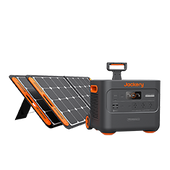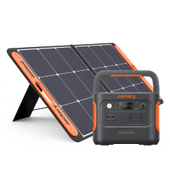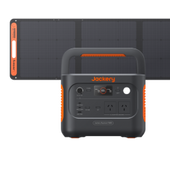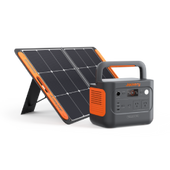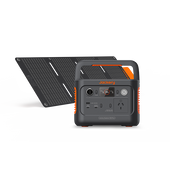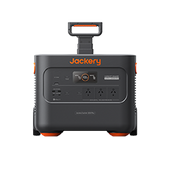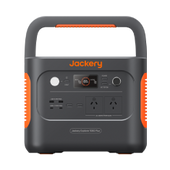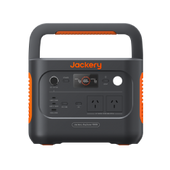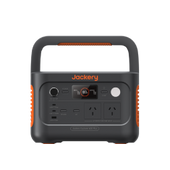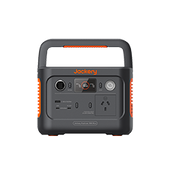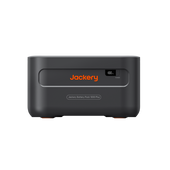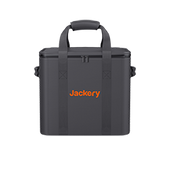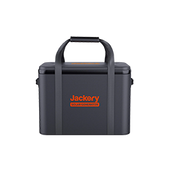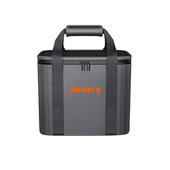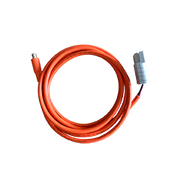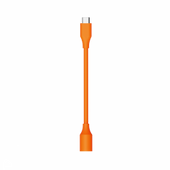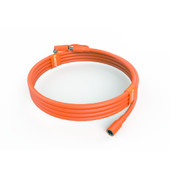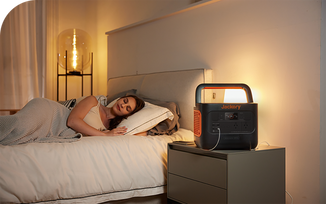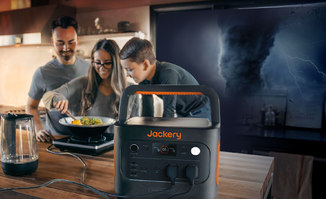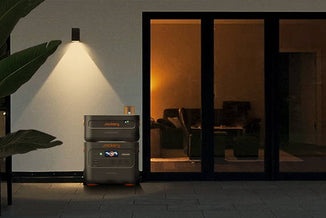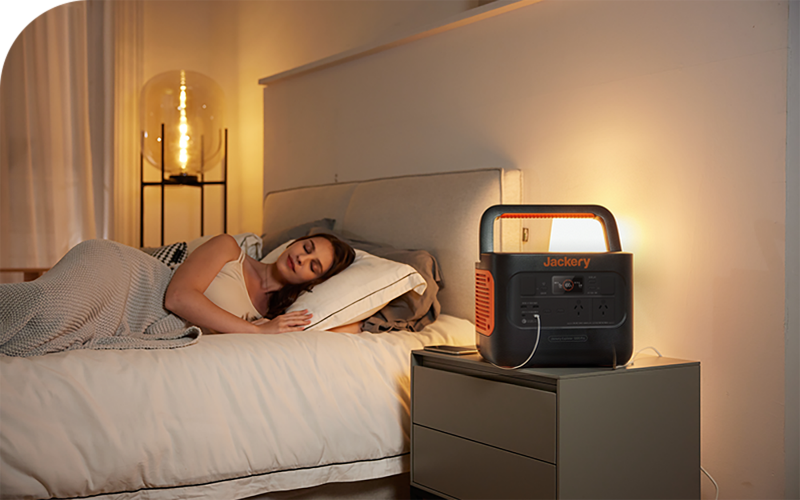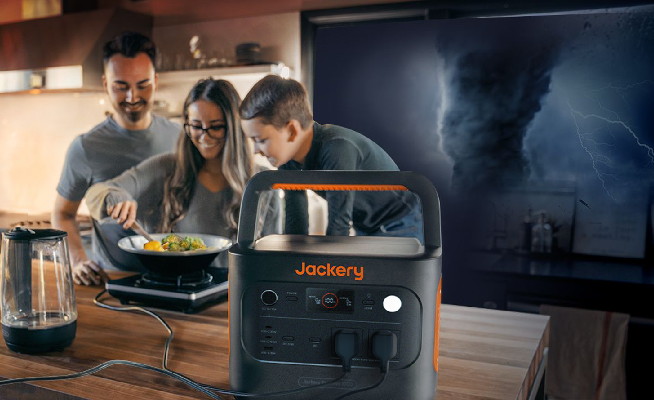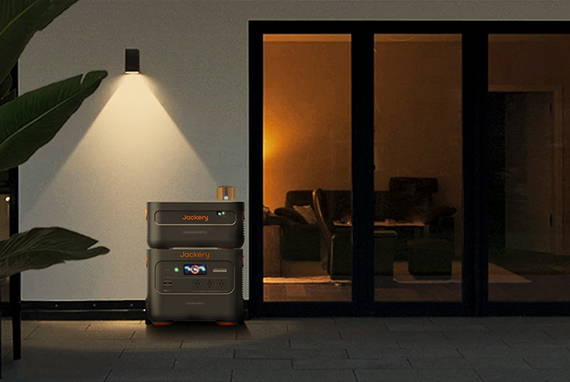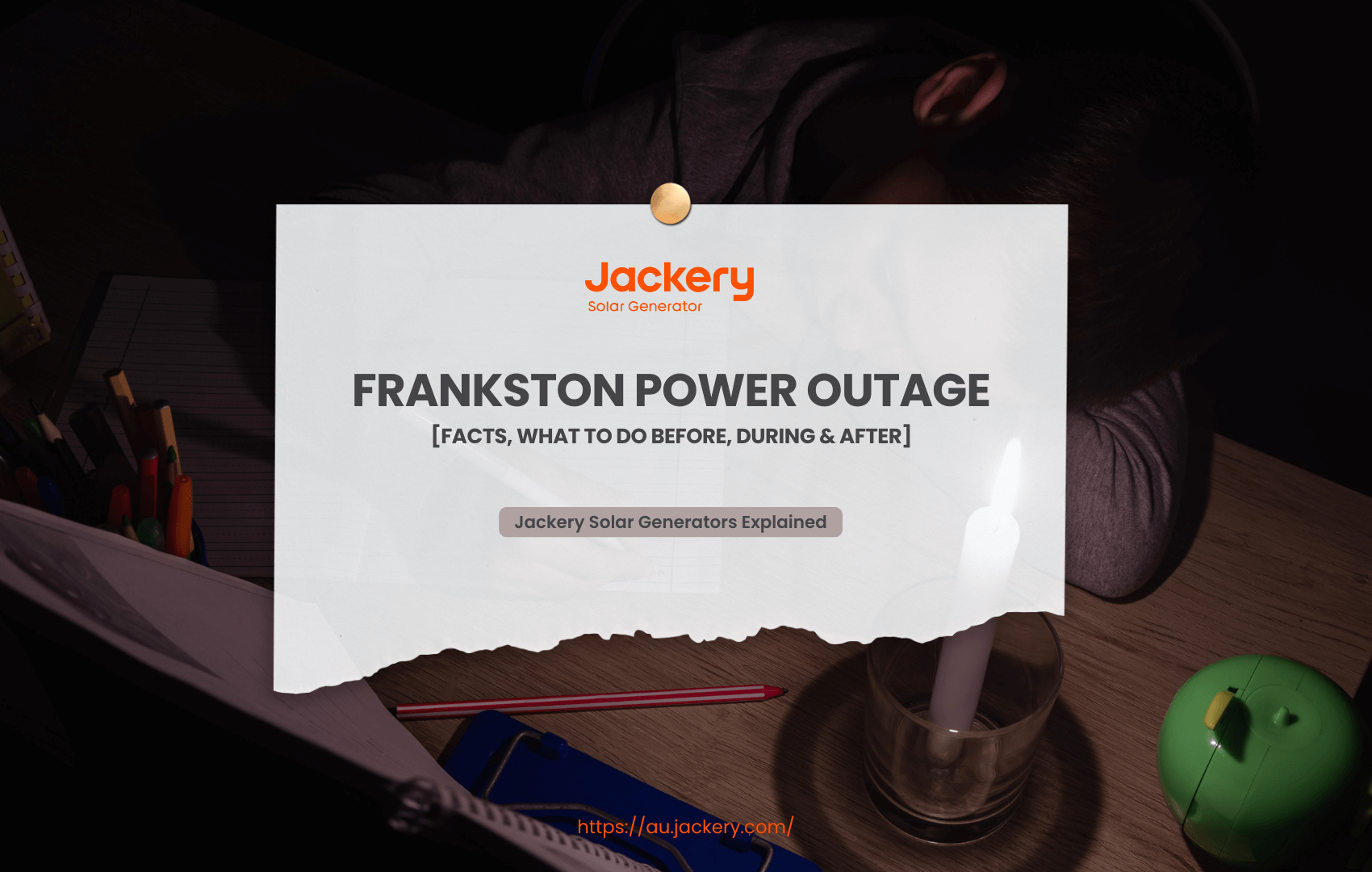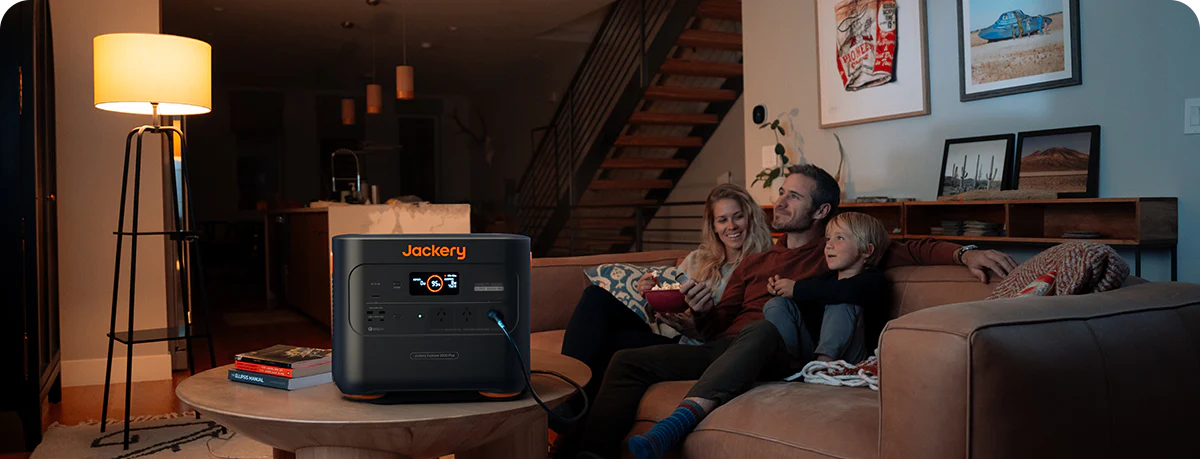|
Key Takeaways: |
|
- An effective emergency evacuation plan outlines evacuation routes and procedures and includes detailed roles and responsibilities. - A fire emergency evacuation plan must have two different alerts. - A personal emergency pack (PEEP) is a valuable tool to ensure someone is taken care of appropriately in an emergency if that person needs extra help or assistance to leave a building or premises. However, the FEEP contains information about fire safety. - We recommend the Jackery Explorer 600 plus and 300 Plus as reliable backup power sources during fire emergencies to support essential devices. |
What Is a Fire Emergency Evacuation Plan (FEEP)?
A fire emergency evacuation plan, or FEEP, contains information about fire safety. This plan outlines the measures that staff members and employees should take if there is a fire inside the building's walls. This plan also includes instructions on handling calls to the fire department.
A fire emergency evacuation plan must include two different kinds of alerts. The first kind of notice is a general fire notification, perfect for smaller firms.
A single page with evacuation instructions in case of fire might serve as a generic fire notification. Usually, it is placed in easily visible locations so that allocated staff members and workers may familiarise themselves with its contents.
Additionally, there is a staff fire alert. This fire evacuation warning is usually directed towards larger structures and buildings with a higher fire risk. It contains comprehensive information on fire safety. A staff fire notice provides precise and thorough instructions on what staff and employees should do in the event of a building fire, considering the findings of a fire risk assessment.
Why Do You Need a Fire Emergency Evacuation Plan?
Fire, a relentless force of destruction, can strike unexpectedly, sparing none in its path. In the quest for protection and preparedness, a fire emergency evacuation plan emerges as a vital shield against the unpredictability of flames. Fires are ruthless, potentially engulfing homes, workplaces, and lives within moments.
These emergencies do not discriminate based on location, time, or circumstance. Therefore, having a well-structured fire evacuation plan is not just a recommendation—it's a necessity that can mean the difference between chaos and organized response. Some states provide the Fire Authorities with Fire Evacuation plan templates and examples.
A fire evacuation plan goes beyond fire extinguishers and alarms; it's a comprehensive blueprint for safeguarding lives and property. One of its most significant values lies in its ability to prevent panic. When individuals know their roles and the actions they need to take during a fire emergency, the chaotic aftermath of panic is mitigated.
More is needed to have a strategy; you must practice it frequently. Practising your emergency evacuation protocols is crucial so everyone knows what to do. People are more prone to make errors or sustain injuries when they are in a panic. It is possible to prevent accidents and save lives by practising the strategy.
Furthermore, practising the plan may ensure that everyone knows the escape route and understands what to do after leaving the building. This may lessen traffic, and individuals can be sure to go safely and promptly.
Now is the perfect moment to implement a regular practice schedule for your emergency evacuation plan if you don't already have one. Ensure that everyone in your company knows the emergency plan and their responsibilities.
What Should Be Included in a Fire Evacuation Plan?
An effective fire emergency evacuation plan not only outlines evacuation routes and procedures but also includes detailed roles and responsibilities, such as the Evacuation Coordinator's duties, methods of operation for firefighting equipment, and specific instructions for safely evacuating people, especially those with special needs. Its purpose is to function as a comprehensive guide, ensuring everyone knows what to do in an emergency.

Australian Fire Protection has designed Fire Emergency Evacuation Plans (FEEP) / Fire Safety Management Plans for businesses of all types and sizes throughout Brisbane, the Gold Coast, and South East Queensland. These include schools, factories, hospitals, retail shops, aged care facilities, childcare facilities, and budget accommodation.
The Building Fire Safety Regulation 2008 requires all buildings to have a written Fire Evacuation Plan detailing the business's policies and procedures when responding to fire and other emergencies. If your company doesn't have this, you must contact us to help establish a FEEP that best suits you and your premises.
Is your Written Fire Evacuation Plan on the specified form? Check that it contains the following:
- Relevant approval documents, i.e. Building Certificate of Occupancy/Classification, Building Fire Safety Installations list, alternative building solutions, and fire safety management plan procedures (if applicable).
- The Building Fire Evacuation Sign / Fire Evacuation Diagram.
- Procedures for giving Fire and Evacuation Instructions .
- The Evacuation Coordination procedures for the building.
- Guidelines for safely leaving the facility in the case of a fire or emergency involving hazardous materials.
- The inclusion of operation methods for firefighting equipment and manually operated fire alarms in the building.
- Name, address and contact details for the building, the owner, and the occupier.
- The Evacuation Coordinator for the building.
- Your Fire Safety Adviser's contact and accreditation details, if applicable.
Here, we have also prepared for you an example of the essential information for a fire escape plan in Queensland; your Queensland Fire and Evacuation Plan will include the following:
- Instructions for evacuating your building safely in the event of a fire or hazardous materials emergency
- The evacuation coordinator, owner, and occupier contact details for your building
- Procedures for issuing fire and evacuation instructions
- Instructions for evacuating persons with special needs
- Fire safety Adviser details (if required)
- The method of operation for firefighting equipment
- The method of operation for manually operated fire alarms in the building
- The method of operation of your building Occupancy Warning System
- Any existing evacuation diagrams for your building
- Alternative solutions that apply to your building
- Building Certificates of Occupancy/Classification
- Your Building Fire Safety Installations
- Other response procedures, i.e. Bomb Threats
Personal Emergency Evacuation Plan (PEEP) VS Fire Emergency Evacuation Plan (FEEP)
A personal emergency pack (PEEP) helps ensure someone is taken care of appropriately in an emergency if that person needs extra help or assistance leaving a building or premises. A PEEP is not required, but it is strongly advised for those requiring assistance in an emergency.
A FEEP is a Fire Emergency Evacuation Plan and is the written procedure of employees' actions in the workplace during a fire incident. A PEEP is a Personal Emergency Evacuation Plan. It is a written procedure designed for an individual with a disability or who needs assistance exiting a building quickly in an emergency.

Fire Emergency Evacuation Plan (FEEP)
In the case of a fire, a FEEP must be a simple, understandable strategy that all staff members can adhere to. The plans should be shown, explained to all staff upon their introduction, and periodically reinforced. Fire drills should be used to evaluate the plan; the outcomes should be tracked, and the FEEP should be improved.
What should be included in a FEEP?
The Responsible Person's name is usually the business owner, a director, a manager or another nominated person.
- What should an individual do when discovering a fire?
- How the Fire Service is contacted –whether or not the fire alarm system is linked directly to the fire service. If not, it must be clear who is responsible for calling 000.
- How vulnerable people should be evacuated – Details of any PEEPs and identification of anyone needing assistance or specialist equipment, including children, older people or person(s) with disability.
- Actions to take in the event of a fire alarm.
- Where fire fighting equipment is located on-site.
- Evacuation procedures and details of escape routes – whether simultaneous or phased.
- Location of Assembly Point – outside the building.
- Names of appointed Fire Marshals.
- What fire training is provided for staff?
Personal Emergency Evacuation Plan (PEEP)
A PEEP is a Personal Emergency Evacuation Plan. A PEEP should be in place for any individual needing assistance or specialist equipment to escape the building quickly in case of a fire alarm.
Individuals who may need a PEEP include:
- Those with disabilities could have sight, hearing, mobility, or cognitive impairments.
- Children.
- Elderly.
- A temporary PEEP may be needed if a staff member suffers from an injury, i.e., a broken leg, or has a short-term impairment.
- A new and expectant mother risk assessment should also highlight whether a temporary PEEP is needed in the later stages of pregnancy.
Remember that periodic reviews and appropriate amendments to FEEPs and PEEPs are required. Naturally, it is essential that employees—especially Fire Marshals and other responsible parties—have access to and are familiar with the FEEP (and PEEPs, if necessary) to guarantee that quick action is taken if a fire breaks out in the building.
Any modifications to the plan must be shared with the personnel, and new hires should be presented with the plan as part of their onboarding process. Frequent fire drills will ensure everyone understands their responsibilities and what to do in an emergency.
Fire Emergency Evacuation Plan Sample
Fire evacuation plans are part of comprehensive fire protection, including solution design, system installation, asset management, and fire compliance. An Effective Fire Prevention/Evacuation Plan can be broken down into three objectives or goals.
Prevent a Fire from Starting
Step 1: Ensure your building complies with relevant regulations, codes and standards.
Step 2: Fire Suppression Systems in place as per AS1670.
Step 3: Good Housekeeping is Crucial.
Step 4: Maintain Machinery and Electrical Items and fire protection systems. as per AS1851.
Step 5: Store and Use Chemicals Responsibly.
Step 6: Maintain Easy Access to All Electrical Control Panels and Fire Alarm Equipment.
Step 7: Test the Fire Alarm System Regularly.
Step 8: Only Smoke in Demarcated Areas.
Prevent the Loss of Life in Case a Fire Does Start
Have a Fire Emergency / Evacuation Plan, which would consist of the following elements:
- Emergency protocols, such as a successful evacuation plan, prompt notification of emergency service agencies, and medical care and support.
- Efficient communication regarding the frequency of testing information, training, and instruction to relevant workers regarding the implementation of the emergency procedures, as well as between everyone else at the office and the individual designated to oversee the emergency response.
Ability to Confine Fire to Its Origin
Effective active and passive fire suppression systems. One of the three essential elements of a building's fire safety, fire protection, and structural integrity is passive fire protection or PFP. PFP uses fire-rated doors, floors, and walls to confine flames or delay their spread.
Active fire protection is the ability to regulate or put out a fire incident either automatically or manually (fire fighting). Using a standpipe system or a fire extinguisher is an example of manual control. Examples of automatic control methods include a gaseous clean agent, a firefighting foam system, or a fire sprinkler system. Generally, automatic suppression systems are located in high-risk areas like big commercial kitchens.
Factoring in an effective and compliant fire emergency and evacuation plan to your overall business obligations under current safety legislation is critical. It can also be a significant cost-saving measure in a fire.
Here, we have prepared a sample fire evacuation plan from the official website of the New South Wales Fire and Rescue Department. You can download it by visiting the NSW fire emergency website. You can also make your fire evacuation plan according to the above regulations.

Jackery Portable Power Stations for Emergencies
Having a fire evacuation plan is crucial to safeguarding your family and possessions during a fire. A dependable power source, such as a Jackery Portable Power Station, is vital when planning escape routes and assembling supplies.
These portable gadgets can power vital equipment like communication aids and emergency lighting during and after an evacuation. Using Jackery in your strategy may guarantee a safer and more efficient reaction to fire situations.
These compact battery chargers are made with ChargeShield technology, which keeps devices safe from voltage changes. They are made to last outside because they have a 94V-0 fire rating and top-level shock protection. When the power goes out, appliances and freezers keep working generally because they can switch to off-grid power without any problems (in less than 20 milliseconds).
Jackery Explorer 300 Plus
The Jackery Explorer 300 Plus can hold 288Wh of power and send 300W out. It also has two PD ports that can send up to 100W of power out, so it can quickly charge multiple devices simultaneously. It also has several charging choices, which makes it easy to use for emergencies.

- Safety First: The Jackery 300 Plus's Lithium Iron Phosphate (LiFePO4) Battery lasts 10 years and produces a constant voltage and pure sine wave that keeps all your electrical products safe. The new ChargeShield technology and steady power output also prevent devices from getting damaged.
- Charging Essential Electronics: You may think a fire emergency will not use electronics and devices. However, electricity can power your phone, walkie-talkie, and even medical devices in a fire emergency. Jackery Explorer 300 Plus, with its 288Wh capacity and multiple output ports, allows you to charge essential devices in an emergency.
- Efficient Recharging Capability: Our improved technology lets you charge efficiently, resulting in faster charging times and longer battery life. Stay charged and linked, Whether at home or on the go. The 300 Plus can power outdoor activities because it has easy charging options.
|
Features of Jackery Explorer 300 Plus |
|
|
Capacity |
288Wh |
|
Dimension |
23x15.5x16.7 cm (3.75 kg) |
|
Cell Chemistry |
LiFePO4 |
|
Cycle Life |
3000 cycles to 80%+ capacity |
|
Management System |
BMS, Over Voltage Protection, Short Circuit Protection |
|
Output Ports |
1*AC Output: 230V, 50Hz, 300W Rated, 600W Surge Peak; 1*USB-A Output: 15W Max 5V⎓3A; 2*USB-C Outputs: 100W Max, 5V⎓3A (5V, 9V, 12V, 15V, 20V up to 5A); 1*Carport: 12V⎓10A |
|
Recharging Methods |
Explorer 300 Plus + SolarSaga 80W: 6.3H Wall Charging: 2H Car Charging: 5.5H |
Jackery Explorer 600 Plus
The Jackery Explorer 600 Plus is the ideal portable power option for emergencies. With its 800W output and 632Wh capacity, it can power many essential electronics and devices, from radios to walkie-talkies. It is your go-to power station for emergencies because it is strong, durable, and light.

- Power Different Emergencies Devices: With its 800W output and 632Wh storage, it can power many emergency devices, such as your phone, emergency light, CPAP machine, and more. Its dual PD fast charging can go up to 100W, so your devices will be charged quickly.
- Quiet Emergency Mode: A full charge in 1.6 hours, 30% longer battery life, and designed for long-term dependability. Charge from 0% to 100% in one hour, always ready for emergencies. Note: The app turns on the Emergency Super Charging mode. The fast and quiet charging modes protect the battery better.
- UPS Function: The Explorer 600 Plus's UPS capability accommodates specific desktop computers, freezers, and CPAP machines necessitating an uninterruptible power supply within 20ms, including the HP Z230 and ResMed AirSense 10, both evaluated by Jackery's Lab. Verify compatibility before usage to guarantee proper functionality. This UPS function does not provide instantaneous switching within 0ms and is unsuitable for high-demand equipment such as data servers or workstations.
|
Features of Jackery Explorer 600 Plus |
|
|
Capacity |
632.3Wh (15.2Ah/41.6V DC) |
|
Dimension |
30x21.9x19.7 cm (7.3 kg) |
|
Cell Chemistry |
LiFePO4 |
|
Cycle Life |
4000 cycles to 70%+ capacity |
|
Output Ports |
2*AC Output: 230V, 50Hz, 3.48A, 800W Rated /1600W Peak; 1*USB-A Output: 18W Max, 5-6V⎓3A,6-9V⎓ 2A,9-12V⎓1.5A; 2*USB-C Outputs: USB-C1: 30W Max USB-C2: 100W Max |
|
Recharging Methods |
Explorer 600 Plus + 2*SolarSaga 100W: 4.3H Explorer 600 Plus + 1*SolarSaga 100W: 8.5H Wall Charging: 1.6H Car Charging: 7.5H |
Fire Evacuation Plan FAQs
The following are the frequently asked questions about the fire evacuation plan.
1. How can we tailor our fire evacuation plan to cater for people with special needs?
An inclusive emergency evacuation plan is crucial. This involves creating a Personal Emergency Evacuation Plan for individuals requiring additional assistance. This may include specific evacuation procedures and allocating personnel to assist during an emergency. It's about ensuring everyone's safety, regardless of their abilities.
2. What should a business consider when planning evacuation routes?
When planning evacuation routes, multiple safe paths, accessibility for all building occupants, clear signage, and regular drills to familiarise staff with these routes are essential. An effective emergency evacuation plan also considers the layout of the building, potential hazards, and the quickest, safest way to exit in an emergency.
3. What are the key components of a fire safety management plan?
A fire safety management plan encompasses several key components: it lists all fire safety installations in the building, provides a clear floor plan showing evacuation routes, details the responsibilities of designated personnel like the Evacuation Coordinator and fire Safety Adviser, and includes emergency response procedures for various scenarios, including fire emergencies and bomb threats.
Final Thoughts
A fire evacuation plan is essential because it gives people a structured way to leave a building safely during a fire. This lowers the risk of injury or death by ensuring everyone knows the designated exit routes, assembly points, and procedures to follow in an emergency, especially when panic can cloud judgment, which saves lives by allowing for a quick and orderly evacuation.

